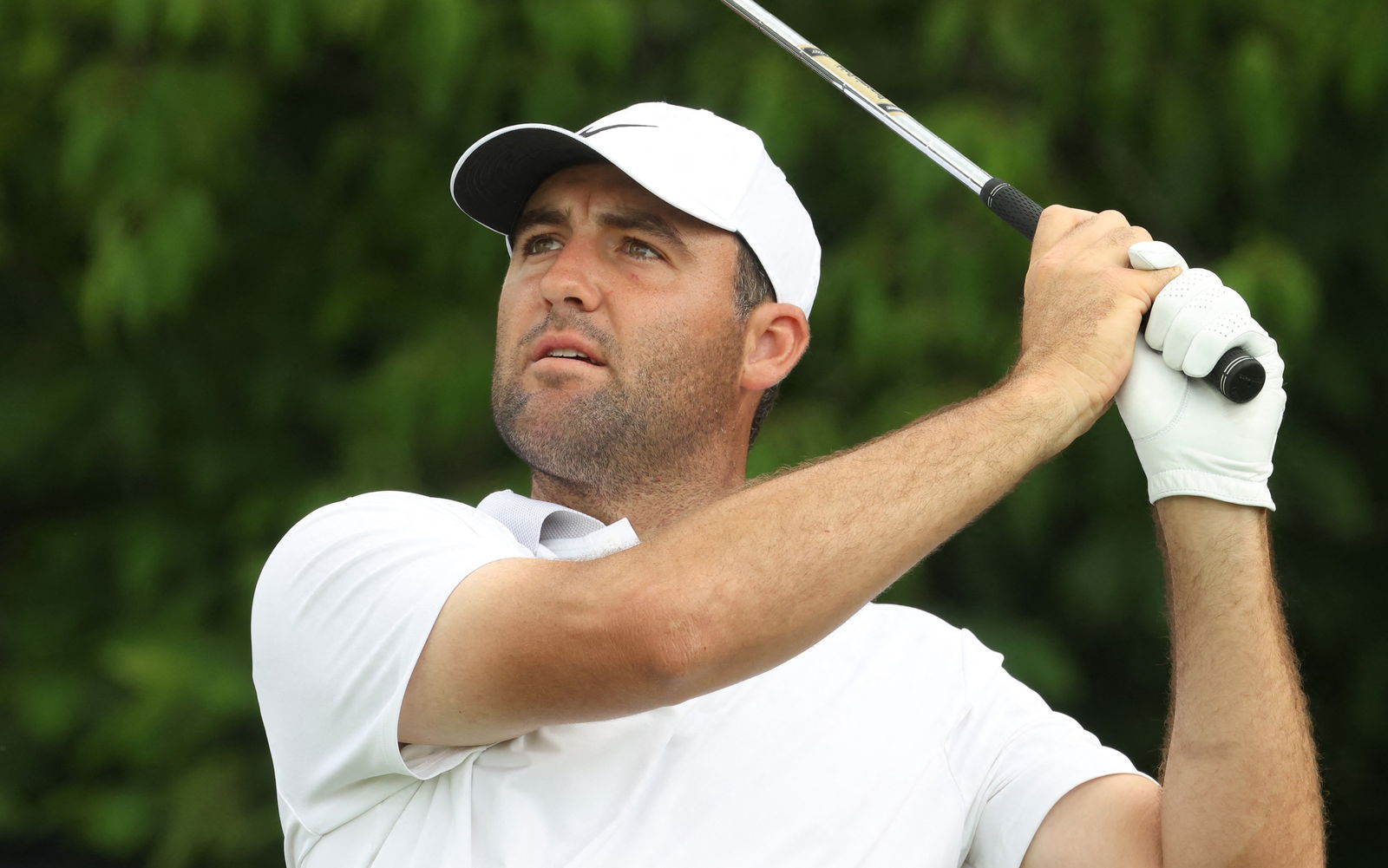10 biggest U.S. Open golf controversies: the pin from hell, Mickelson's madness, the unreachable fairway
GolfMagic takes a trip down memory lane to look back at 10 of the biggest controversies ahead of this week's 125th U.S. Open.

Welcome to the U.S. Open, a major golf tournament that stirs up more drama, debate and downright rage than any other on the schedule.
For more than a century, the USGA’s flagship event of the season has walked a fine line between brilliance and brutality.
And when it crosses that line?
Well, things can get ugly, and fast.
From mind-bending pin placements and sudden rule reversals to course conditions that look more like survival tests, the U.S. Open doesn’t just crown champions. It manufactures meltdowns.
Now, as the 2025 U.S. Open returns to Oakmont Country Club, one of the most feared courses in the sport, the stage is set for yet another combustible week.
Record 10-time U.S. Open venue Oakmont has staged many iconic moments, both triumphant and tumultuous, and if history is any guide then we could be in for some spectacle.
The rough is most certainly up, the greens are rapid, and well, as Rory McIlroy nicely summed for us after his first sighter last Monday, it's going to be a "brutal test where level par could end up being the winning score."
Defending champion Bryson DeChambeau has also given us a sneak preview:
🚨⛳️🫨 #OFFICIAL - USGA officials confirm green speeds of between 14’ 5” and 14’ 9” on the stimp and 5 inch thick rough for next week’s U.S. Open at Oakmont, per @ToddLewisGC
— NUCLR GOLF (@NUCLRGOLF) June 5, 2025
What will the winning score be?
pic.twitter.com/MDYLZMkBfN
Oakmont has never been kind. It’s fast, it’s fearsome, and it’s unapologetically old-school.
With its marble-like greens, punishing bunkers and puny fairways, it may be the perfect storm for controversy.
Will we see another rules saga? A hole location no one can figure out? Another player lose their cool on national television perhaps?
At Oakmont, anything is possible.
GolfMagic has listed what we deem to be the 10 biggest controversies in U.S. Open history, a list that may need updating come Sunday...
Let's dive in, starting in 1955...
10 biggest controversies in U.S. Open golf history
When you see the rough videos from the US Open this week, remind yourself of this absolute cabbage up to Hogan’s knees in the 1955 tournament at Olympic.
— Flushing It (@flushingitgolf) June 9, 2025
I still don’t know what’s more shocking, the length of the rough or Ben Hogan missing a fairway! pic.twitter.com/FJEQy44KiL
Olympic Club, 1955: Fleck's Miracle, Hogan's Nightmare
In 1955, San Francisco’s Olympic Club earned its infamous nickname - the graveyard of champions - when Jack Fleck staged one of the greatest upsets in sports history.
Ben Hogan, then chasing his fifth U.S. Open, appeared to have sealed victory.
Broadcasters wrapped their coverage. Gene Sarazen even congratulated him on air.
But Fleck, using Hogan-branded irons just to rub things in, birdied two of the final four holes to force an 18-hole playoff.
Hogan unraveled the next day, finding deep rough off the 18th tee and needing three hacks to escape.
His double-bogey handed Fleck his only major.
From that year forwards, the USGA took over all course setup responsibilities.
Winged Foot, 1974: The Massacre That Was Meant to Be
A year after Johnny Miller shot a record-setting 63 at Oakmont, the USGA struck back, hard.
"The Massacre at Winged Foot" became legend.
Greens were lightning fast. The rough was thick enough to swallow clubs. Players like Jack Nicklaus were seen putting off greens.
"Advancing the ball 100 yards from the rough was an achievement," said Hale Irwin, who won with a 7-over par total.
USGA chairman Sandy Tatum’s legendary defense of the setup remains a classic:
"We’re not trying to humiliate the best players in the world—we’re simply trying to identify them."
Mission... well, sort of accomplished.
Inverness Club, 1979: The Anti-Hinkle Tree
It sounds like satire, but it really happened.
Lon Hinkle found a shortcut by hitting his tee shot on the 8th hole down the adjacent 17th fairway, slicing off distance.
Others, including Chi Chi Rodriguez, followed.
The next morning, a tree was planted overnight to block the route, earning the moniker "the anti-Hinkle tree."
"I looked at the hole and noticed it was a wide-open shot," said Hinkle.
"Chi Chi got real excited by the idea."
The USGA got less excited, and more reactive.
A wonderful photograph of Payne Stewart on the 72nd hole of the U.S. Open at the Olympic Club in 1998 -
— TheGolfDivoTee™ (@TheGolfDivoTee) March 31, 2025
Payne came up short of Lee Janzen's winning total of 280 by a single stroke and but for the absurdity of the USGA's pin position on the 18th in round two when his 8-foot… pic.twitter.com/WvcKgvTALO
Olympic Club, 1998: Pin the Blame on the Crest
In 1998, a cruel pin placement on the 18th green ignited outrage.
The flag was cut on a slippery crest, making stopping a putt near impossible.
Payne Stewart, who would tragically pass away the following year, watched his eight-foot birdie putt roll 25 feet away, leading to a bogey.
Stewart ended up losing by one shot but he would go on to win the 1999 U.S. Open at Pinehurst, four months before dying in a tragic plane crash.
Kirk Triplett, already out of contention, made a triple-bogey on the 18th hole and was penalised two strokes for trying to stop his ball from rolling with his putter.
Ex USGA director David Fay wryly suggested:
"Give him an exemption for next year for creative protest."
Southern Hills, 2001: Slippery Slopes and Triple Three-Putts
This one came down to poor design meeting poor preparation.
The 9th and 18th greens at Southern Hills featured extreme slopes that couldn’t handle the lightning-quick green speeds.
Retief Goosen, Stewart Cink and Mark Brooks all arrived on the 18th with a shot to win, and all three of them three-jabbed.
Course superintendent John Szklinski admitted the 18th was a mistake:
"We had it cut too short for the slope of that green. It was like a false front."
The USGA slowed the greens for Sunday, but the damage and confusion was already done.
Goosen, who missed a short two-footer for the win on the 18th in regulation play, would return on Monday to defeat Brooks by two shots in the 18-hole playoff.
The South African would go on to add a second U.S. Open at Shinnecock Hills in 2004, another tournament that caused controversy.
Let's relive that 18th hole carnage here:
2001 US Open.
— Henrik Bjørnstad (@henrikbjornstad) March 15, 2020
Putte-show for lederballen på det
72. hullet, resulterer i 18-hulls playoff dagen etter for Retief Goosen og Mark Brooks.
Heldigvis for Goosen, går han seirende ut til slutt. pic.twitter.com/NJ69zGvva6
Bethpage Black, 2002: The Unreachable Fairway (for some)
At 492 yards, Bethpage’s 10th hole in 2002 was a par-4 with teeth.
Rain and wind turned it into an absolute beast.
The fairway required a 260-yard carry over thick rough, and many players in the field simply could not reach the short grass.
Mike Weir, speaking candidly, said:
"I suspect probably half the field couldn’t reach that [fairway]."
Tiger Woods, unaffected by mortal limitations, won the tournament at 3-under par.
Woods was the only player to finish in the red as he saw out a three-shot victory over Phil Mickelson.
That would mark the second of his three career U.S. Open wins.
Some of the shortest hitters on Tour may face a similar issue at this week's U.S. Open when they board the par-3 8th, which is expected to measure around 290 yards, a record distance for a par-3 in major history.
Shinnecock Hills, 2004: Baked-Out, Blown Away
Shinnecock Hills has had more than one meltdown, but in 2004, it reached boiling point, quite literally.
After under-par scores on Thursday and Friday, the USGA cut off water to the course.
By Sunday, greens were so fast they were borderline unplayable.
Officials resorted to watering between groups, a first in major history.
"It was a great deal embarrassing," said former USGA executive director Frank Hannigan.
Most players couldn’t break 80.
Goosen and Mickelson were the only players to finish under par as the South African captured his second U.S. Open title by shots on 4-under.
Chambers Bay, 2015: One Leg Shorter Than the Other
Hype met harsh reality at Chambers Bay, a quirky links-style layout in Washington State that debuted as a U.S. Open host in 2015.
Woods called the course "brutal."
Gary Player delivered the zinger of the week:
"The man who designed the golf course must have had one leg shorter than the other."
The greens, riddled with poa annua and bare patches, were the main target.
Justin Rose likened putting to "outdoor bingo."
To top it off, Dustin Johnson three-putted from 12 feet on the final hole, handing victory to Jordan Spieth.
Oakmont, 2016: The Rule Heard ’Round the World
Ah yes, Oakmont. The very course hosting this week's 125th edition of the U.S. Open was at the centre of one of the biggest modern rules controversies just nine years ago.
Dustin Johnson’s ball moved on the 5th green. He hadn't addressed it, and a rules official cleared him.
But mid-round, another official reversed course, saying the issue would be reviewed afterward.
The penalty was eventually upheld, but thankfully did not affect the outcome.
Still, the backlash was fierce.
"This is ridiculous... No penalty whatsoever for DJ," McIlroy vented at the time.
"Let the guy play without this crap in his head. Amateur hour from USGA.
"This isn’t right for anyone. If it was me I wouldn’t hit another shot until this farce was rectified."
Spieth also agreed: "Lemme get this straight. DJ doesn’t address it.
"It’s ruled that he didn’t cause it to move. Now you tell me he may have? Now? This is a joke?"
But in typical laidback Dustin Johnson-like fashion, he simply shrugged it all off.
"Who cares, it doesn't matter anymore..."
Shinnecock Hills, 2018: Mickelson's Madness
Fourteen years after its infamous baked-out greens, Shinnecock delivered a sequel, this time starring Mickelson.
On the 13th green, after misjudging a putt that rolled back toward him, Mickelson casually jogged over and hit it while it was still moving.
It was a two-stroke penalty, and he took it with zero regret.
"I just wanted to get on to the next hole," he told Curtis Strange.
"If somebody is offended, I apologise. But toughen up."
When Phil Mickelson hit a moving ball on the 13th hole during the US Open at Shinnecock Hills. pic.twitter.com/GGRlbpnU7v
— Golfballing (@golfballingpod) June 11, 2024
Golf fans recently discovered a fascinating stroke and distance rule they can use on the greens should this ever happen to them.
Do you agree with our list above?
Can you remember any bigger controversies to unfold at the U.S. Open?
Will we see any more controversy at the 2025 U.S. Open at Oakmont this week?!
Head over to our GolfMagic Facebook and X / Twitter channels to let us know.


